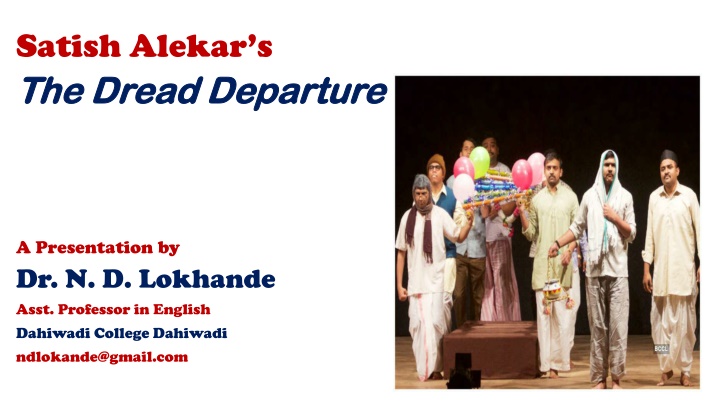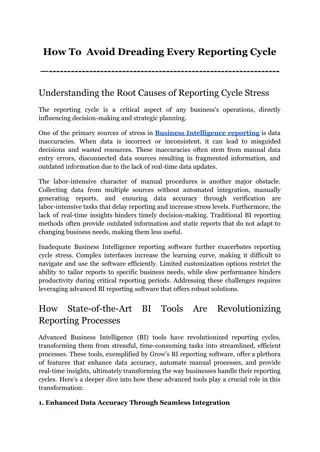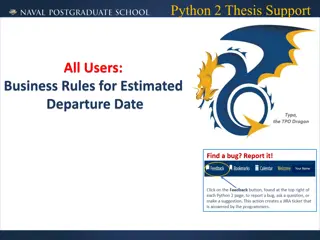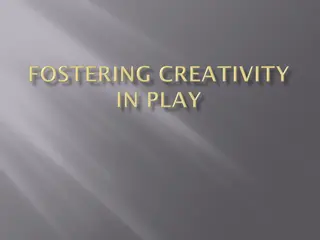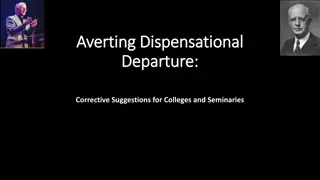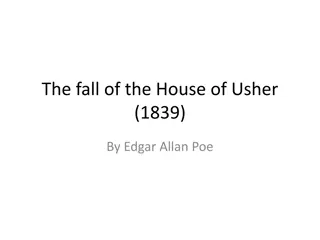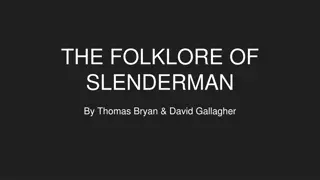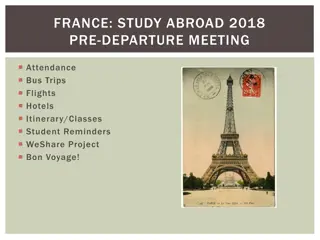The Dread Departure: A Play by Satish Alekar
The play "The Dread Departure" by Satish Alekar delves into the intriguing aftermath of a man's death in a middle-class chawl. Through a blend of humor and black comedy, it sheds light on human relationships, societal norms, and the subtle hypocrisies that prevail. The protagonist, Bhaurao, embarks on a journey of convincing his wife and neighbors of his demise, leading to poignant yet humorous reflections on life and death.
Download Presentation

Please find below an Image/Link to download the presentation.
The content on the website is provided AS IS for your information and personal use only. It may not be sold, licensed, or shared on other websites without obtaining consent from the author.If you encounter any issues during the download, it is possible that the publisher has removed the file from their server.
You are allowed to download the files provided on this website for personal or commercial use, subject to the condition that they are used lawfully. All files are the property of their respective owners.
The content on the website is provided AS IS for your information and personal use only. It may not be sold, licensed, or shared on other websites without obtaining consent from the author.
E N D
Presentation Transcript
Satish Alekars The Dread Departure The Dread Departure A Presentation by Dr. N. D. Lokhande Asst. Professor in English Dahiwadi College Dahiwadi ndlokande@gmail.com
The playwright Satish Vasant Alekar (born 30 January 1949) Marathi playwright, actor, and theatre director. A founder member of the Theatre Academy of Pune, plays Mahanirvan (1974), Mahapoor (1975), Atirekee (1990), Pidhijat (2003), Mickey ani Memsahib (1973), and Begum Barve (1979), along with Mahesh Elkunchwar and Vijay Tendulkar he is one of the most influential and progressive playwrights not just in modern Marathi theatre, but also larger modern Indian theatre. Grandson of Kakasaheb Gadgil. Bothered by the Funeral procession of his grandmother
produced by the Theatre Academy, Pune. More than 400 shows were performed one of the most distinguished plays of Indian Theatre. first show of the play -1974 relevant to socio-cultural aspects translated into English by Gouri Deshpande and performed in more than ten languages performed in a lyrical/ musical form using Maharashtrian folk lore and music styles like Kirtan, Gondhal, Bhajan, Abhang, etc. Features- canny humour and black comedy, highlights the intricacies of human relations while passing subtle messages on sociocultural systems, typical human tendencies, customs, traditions, etc.
The play is based on incidents that follow the death of a person in a middle-class chawl. The reactions of the grieving wife and absent son of the deceased whose return is awaited, nosy relatives and neighbours for whom death is a way to generate humour depict the hypocrisy of our society.
Play Synopsis Act I: Bhaurao, the protagonist in the play is a common man living in a chawl, who is in his fifties. At the beginning of the play he tries to convey & convince his wife, Rama, that he is no more as he died in his sleep last night. But she ignores him; assuming that he is just joking; playing a prank. Bhaurao then proves his demise by giving her some strong evidences, he makes her believe in whatever he is saying by bringing to her notice the reactions of the chawlkari neighbors. Rama finally understands & accepts that he is dead. She cries & starts mourning over her husband s death. Bhaurao then imagines all the proceedings of his funeral & the last rites; he depicts how his chawlkari- neighbors would react to the situation.
Unfortunately on the day of his demise, Bhauraos only son Nana is not in town; he has gone to play a sport tournament in some other town; all the neighbors are waiting for Nana s arrival; last rites are on hold due to this delay. Bhaurao vividly illustrates everything that would happen in this wait time. Finally Nana arrives, the funeral starts; all chawlkari- neighbors accompany Nana to the crematorium but they all get stuck as they get to know that Municipal Corporation has shut down that crematorium and a new one is set up far away; the rites get further delayed. Bhaurao fantasizes that he is through with all the rituals and has reached the heaven, Nana makes him realize that it s not over yet the last rights are yet to be done- Bhaurao insists that he would want his last rites to be performed in the old crematorium only, and Nana explains the hindrances in doing so.
Act II Act begins with Nana now taking over as the narrator. He orders his mother to cook rice balls as that was of 10th auspicious day after his father s death and he wants to take rice balls to the new crematorium to offer rice balls (Pind) to crows. He meets two characters fighting for the place to keep rice balls. They are also at the new crematorium to offer rice balls to the dead soul. Nana helps and tries to sort out their differences by becoming crow himself. To his surprise his father, Bhaurao also reaches to the site of new crematorium. Nana offers rice balls to his hungry father who has not yet cremated. Father complains that he feels suffocated in the attic of his home where Nana has hidden him. He also mentions that that as he is a stinking corpse. A part of his finger is cut off and it needs stitching. Nana hurriedly stiches his finger and scolds him not to come out on the street as he is not cremated yet.
Nana laments over his own plight & misery as he is unable to perform the last rites as per his father s wish. Bhaurao requests Nana to let him meet Rama ; he says he wants to talk to her at least once, he has been missing her- Nana allows him to meet his mother - but Bhaurao gets a shock of his life to know that his beloved wife, Rama, has found someone else after him. Rama tells his that she liked the man who was wearing a black suit at the time of funeral procession and that was third from the left when they lift the bier of Bhaurao. Bhaurao is shocked hearing this and he tells Nana about this; Nana is stunned to see this sudden twist in the story; he probes his mother to find out facts and more details of this new story- he asks his mother to reveal all the details- Rama confesses her feelings towards the New man but tells Nana that she can t describe the man exactly ; but she remembers his attire; a suit & black goggle- she says she saw him last when he had come for Bhaurao s funeral-
Nana & Bhaurao get on to a mission of finding out the man with a suit & black goggle, they decide to find out everything about him- Who is he, was he there in Rama s life before Bhaurao s death, or did they meet after his death; where & how did they meet etc. To explore more details, Nana tells his father to dress up exactly like the man that his mother has been describing. Nana tells his mother that he is willing to help her for her 2nd marriage with the man of her desire- and he has invited the same man to their house- Bhaurao (dressed up like the man) comes and interacts with Rama- she blushes she is thrilled; she is very excited for the beginning of her new life. Nana is perplexed; he cannot understand the complexities of this intricate puzzle; he takes his father to the old crematorium and performs the last rites. Bhaurao is peacefully cremated in the old crematorium.
Form- Black Comedy Black comedy, also known as dark comedy or gallows humor, is a comic style that makes light of subject matter that is generally considered taboo, particularly subjects that are normally considered serious or painful to discuss. Comedians often use it as a tool for exploring vulgar issues, thus provoking discomfort and serious thought as well as amusement in their audience. Popular themes of the genre include death, violence, religion, and barbarism.
Themes Themes Reactions within the mind and the reactions to be shown to others Several levels of death- ceremonial, psychological, and social Death as a witness of death The effect of death on wife, son and society Suppression of women s desires Satire of dead rituals and falsehood Hypocrisy and selfishness Criticism of middle-class mentality
